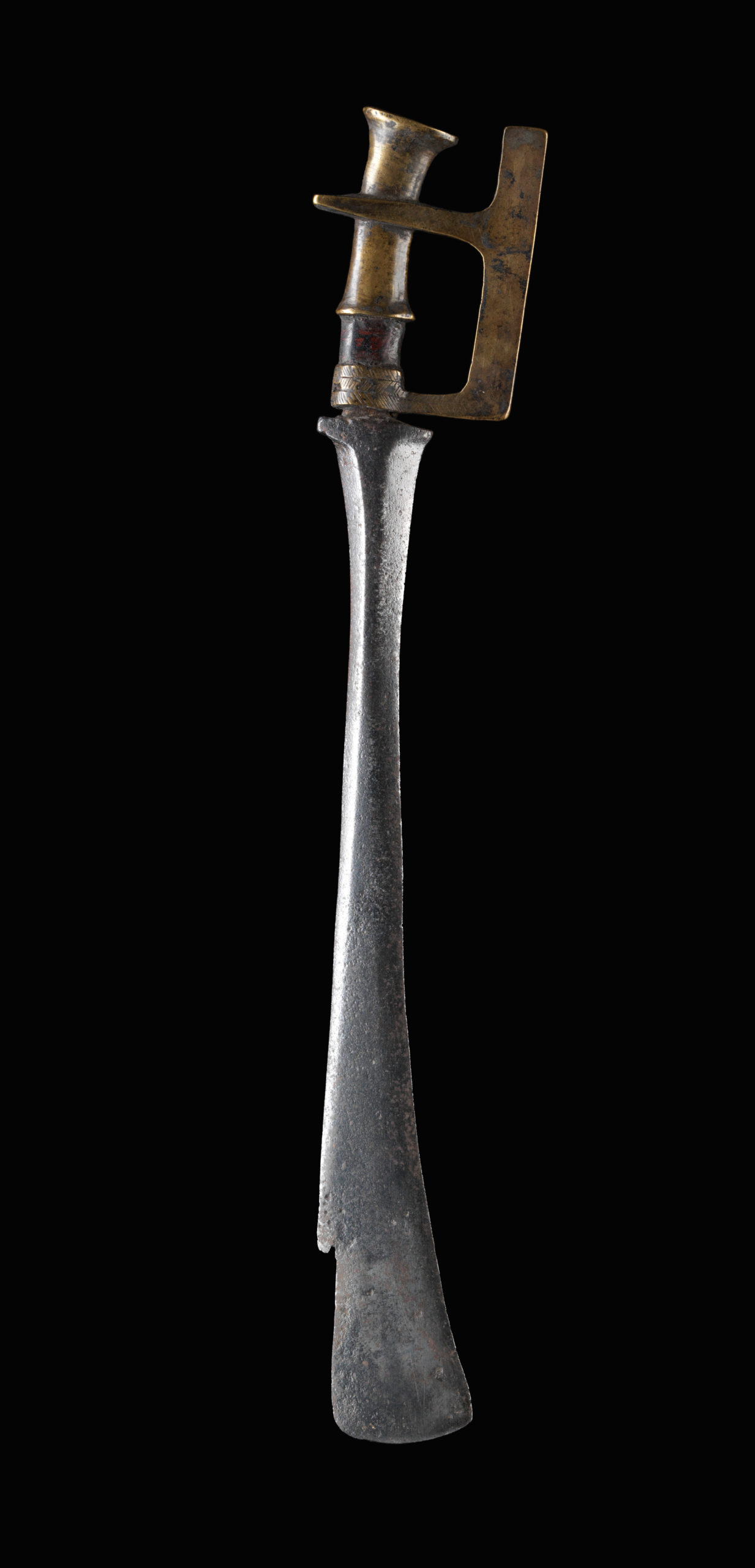Sword „kuki dao“
This sword, known only to the Kuki of Assam, is a relatively short weapon with a bow handle cast in lost form from brass and decorated with fine hallmarks. Due to its strict lines, it appears almost graphic. The sword has a very old-fashioned look and according to the Kuki, it has not been common for a long time. The blade is very strong at the base and narrowly tapers forward into a widening blade with a blunt rounded end. The concave blade usually ends in a small hook, which is worn out here, however, due to its age. The end of the handle, which opens like a funnel, is usually decorated with red goat hairs, which have been lost here. A red ribbon (copper?) of an undefined material runs around the lower part of the handle.
This type of blade object is probably very old. It probably goes back to Indian models, as depicted on temple friezes in Mohendrodajo, Ayanta and Hoysala (7th – 11th century). There is also a remarkable resemblance to sword forms from Sulawesi and Maluku (pade), especially with regard to the bow handle.
The earlier history of the Kuki is as enigmatic as its peculiar sword form. According to their own tradition, the Kuki are said to have migrated down the Shan Mountains southwards to Assam. The origin of the term “kuki” is unclear. Originally it was not a self-designation of the Kuki, but is an ethnogenetic summary of several groups with cultural similarities. According to the British reporter Adam Scott Reid, the earliest European mention of the term kuki dates back to 1777, but a Sanskrit text from 33 C.E. already mentions two kuki chiefs, Kuki Ahongba and Kuki Achouba. Sanskrit texts also mention the East Tibetan “Kirata people”, who are probably the same as the Kuki. According to C.A. Soppit, the Kuki migrated to Manipur in the early eleventh century, thus entering the light of Indian historiography. The Kuki-Chin-Naga languages today form a large subgroup of the Tibetan-Burmese languages, a primary branch of the Sino-Tibetan languages.
| Object | Sword „kuki dao“ |
| Culture | Kuki-Naga, Northeast India (Assam, possibly Myanmar) |
| Time | 16th – 18th century or earlier |
| Dimensions | Length 48 cm |
| Material | Steel, brass |





